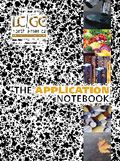Isolation and Purification of Polysaccharides
In the last few decades, the novel functions of polysaccharides have provided a major impetus for increasing scientific attention. Among the most promising aspects are their immunomodulatory and antitumor effects, thickening agents and stabilizer effects.
In the last few decades, the novel functions of polysaccharides have provided a major impetus for increasing scientific attention. Among the most promising aspects are their immunomodulatory and antitumor effects, thickening agents and stabilizer effects.
It is well known that the molecular weight, conformation, chemical modification, and solubility of the polysaccharides significantly affect their antitumor and immunomodulatory activities. However, the studies on molecular weight, solution property, and chain conformation of these polymer solutions have seldom been published. The scant evidence available inspired us to embark on the present study: the isolation and purifi cation of polysaccharide fractions from an edible fungus, Lentinus edodes, the determination of its chemical structure and molecular weight; the assay of antitumor activity of polysaccharides and their sulfated derivatives in vivo and in vitro.

Figure 1
The light-scattering intensities were measured with a DAWN® multi-angle light scattering instrument (MALS) equipped with a He–Ne laser at 25°C. The refractive index of 0.25 M LiCl–Me2SO, measured by an Abbe refractometer, was 1.4795. The refractive index increments (dn/dc) were measured with a double-beam differential refractometer at 633 nm and 25°C. The polysaccharide solutions were dialyzed against solvent for 72 h. The values of specific refractive index increment dn/dc in 0.25 M LiCl– Me2SO and in aq 0.5 M NaCl were determined to be 0.058 and 0.133 cm3 /g, respectively. ASTRA software was utilized for data acquisition and analysis.
Figure 2
Two kind of α- and β- glucans co-exist in the extract from fruiting bodies of Lentinus edodes. The water-insoluble fraction was identified to be α-(1, 3)-D-glucan with a few (1, 6) branch linkages, and the most abundant polysaccharide component. The water-soluble fraction was β-(1, 3)-D-glucan with (1, 6) branches. Strong intermolecular hydrogen bonds exist in the α-glucan, resulting in its water-insolubility, but there are not any aggregates or multiple-helix structures for the α-glucan in aqueous 0.5 M urea/0.5 M NaOH or DMSO/0.25 M LiCl. The Mw values for α-glucan in the above solvents were 24.1 × 104 and 10.9 × 104 , respectively. [η]- Mw relationship of the β-glucan in 0.5 M NaCl solution at 25°C was [η]=7.69 × 10-6 Mw 1.32 at Mw from 1.87 × 105 to 1.2 × 106 . Predominant species of the β-glucan exist as triple-stranded helical chains in 0.5 M NaCl solution, and as single-flexible chains in DMSO.

Wyatt Technology Corporation
6300 Hollister Avenue
Santa Barbara, CA 93117
Tel. (805) 681-9009; Fax (805) 681-0123
Email: info@wyatt.com

Automated Sample Preparation (ISO 20122) for MOSH/MOAH in Seasoning Oils
May 6th 2025This work presents an Automated Sample Preparation procedure for MOSH/MOAH analysis of Seasoning Oils. We compare results from a manual epoxidation procedure compliant with DIN 16995 with results based on fully automated sample preparation (epoxidation and saponification) compliant with ISO 20122. In both cases, online clean-up via activated aluminum oxide (AlOx) are used to remove interfering n-alkanes from the MOSH fraction during the HPLC run. Automated data evaluation using a dedicated software (GERSTEL ChroMOH) is presented.
Free Poster: NDSRI Risk Assessment and Trace-Level Analysis of N-Nitrosamines
April 25th 2025With increasing concern over genotoxic nitrosamine contaminants, regulatory bodies like the FDA and EMA have introduced strict guidelines following several high-profile drug recalls. This poster showcases a case study where LGC and Waters developed a UPLC/MS/MS method for quantifying trace levels of N-nitroso-sertraline in sertraline using Waters mass spectrometry and LGC reference standards.
New TRC Facility Accelerates Innovation and Delivery
April 25th 2025We’ve expanded our capabilities with a state-of-the-art, 200,000 sq ft TRC facility in Toronto, completed in 2024 and staffed by over 100 PhD- and MSc-level scientists. This investment enables the development of more innovative compounds, a broader catalogue and custom offering, and streamlined operations for faster delivery. • Our extensive range of over 100,000 high-quality research chemicals—including APIs, metabolites, and impurities in both native and stable isotope-labelled forms—provides essential tools for uncovering molecular disease mechanisms and exploring new opportunities for therapeutic intervention.

.png&w=3840&q=75)

.png&w=3840&q=75)



.png&w=3840&q=75)



.png&w=3840&q=75)













